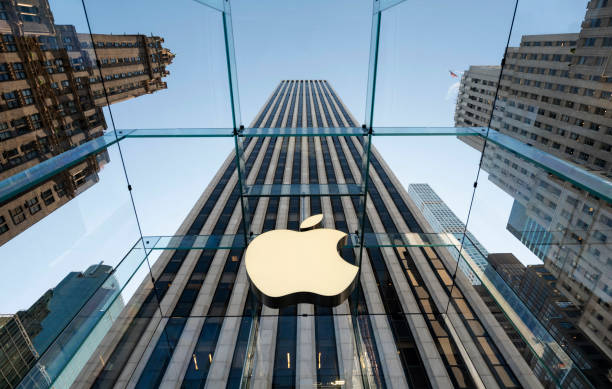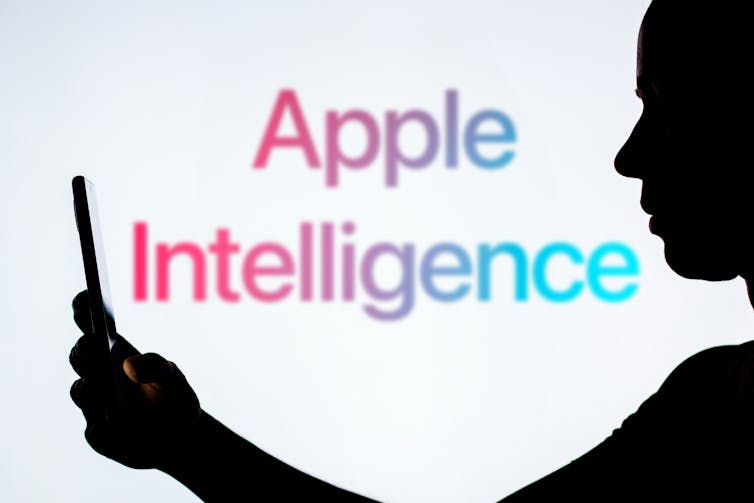
Omanyano ovanhu koikundaneki yomalungula kashili paveta, Commisiner Sakaria takunghilile
Veronika Haulenga
Omanyano ovanhu koikundaneki yomalungula kashili paveta, Commisiner Sakaria takunghilile
Veronika Haulenga
Listeners:
Top listeners:
-
play_arrow
Omanyano ovanhu koikundaneki yomalungula kashili paveta, Commisiner Sakaria takunghilile Veronika Haulenga
Apple’s iPhone 16 launch shows AI is shaking up the tech giant’s core market


By Lewis Endlar, Keele University
As someone who helped set up one of the first iPhones back in late 2007 on live TV, I found the launch of the first iteration of Apple’s smartphone an exciting time. , a grinning Steve Jobs proudly held up that early device to the obvious delight of Apple fans.
Did the late Apple founder know then that he would change the future of mobile
communication forever? That breakthrough device was revolutionary, transforming the way people interact with each other.
, Apple released details of its new iPhone 16, along with several other new products such as the Apple Watch Series 10 and Air Pods 4. The unveiling of the iPhone 16 could mark a turning point in the history of Apple’s smartphone brand.
Back in 2007, there were no other players in the market. Today, competition is fierce and there is a new factor in the mix that has the potential to shake up the smartphone market in the long term – artificial intelligence (AI).
The much vaunted new features based on AI are being marketed under the banner of “Apple Intelligence”. These include features for photo and video editing – something that other companies have made much of when launching new smartphones this year, such Google’s Pixel 9 – but also features to help you edit text and generate your own AI images.
Since the release of the original iPhone, there have been a lot of changes at Apple. Jobs died in 2011 but his successor as CEO, Tim Cook, has provided a solid strategic direction for the company. Jony Ive, the industrial design guru behind many of Apple’s most famous products left the company in 2019 to set up his own design company, LoveFrom.
There have been more than 40 iterations of the iPhone, with variants that include the regular version, the Plus, Pro and Pro Max versions. Over 50% of Apple’s total revenue is generated by sales of the device.

Rafa Press / Shutterstock
As such, it still forms the cornerstone of the company’s business, which now includes associated products such as the aforementioned AirPods and watches. There’s also the Apple Vision Pro, a “mixed reality” headset which layers digital elements over a view of the real world. Other sectors of Apple’s business now include cloud storage along with TV and filmmaking.
However, Samsung, Google, OnePlus, Xiaomi and an abundance of other players in the smartphone market are all vying to find a place in your pocket for their smartphone. With such fierce competition in the phone market, Apple – and those other companies – have previously concentrated on improvements to the features they already offer.
That means faster processors, longer battery life with faster charge times,
improved camera technology, larger storage capacity, better WiFi and Bluetooth, instant payment technology and more robust, titanium cases with near indestructible screens.
However, there is now a rush to incorporate AI into phones and indeed into other Apple devices. This is not an area that has been emphasised to the consumer much before now, but Apple has recently begun heavily trailing its Apple Intelligence features.
Google and Samsung have also made much of AI features in launches for their smartphones this year. So could AI be a game changer in a market that has until now been all about incremental improvements?
As a researcher into AI, I spent this summer looking at the features of this
technology, which of course has been around for many years. We have now reached a point in the development of AI where it will undoubtedly change the way we work and live.
The new iPhone 16 with Apple Intelligence will offer a number of AI-based tools to enhance the user experience. This will include proofreading, rewriting, and summarising text, an enhanced ability to detect objects in images and videos, such as faces and descriptions. It will also include the ability to generate images by describing what you want to create in a text or voice prompt, image editing features and the ability to create personalised emojis.
One intriguing AI-enabled feature is called Visual Intelligence. This allows you to search for content on whatever you can see through your phone with the help of a new camera control button on the side of the iPhone 16. One of the examples given during Apple’s Monday launch event was the ability to take a photo of a restaurant and instantly pull up opening hours, a menu and ratings, without having to manually input that information into a search engine.
Users could also take a photo of a poster for an event they see in the street. The iPhone 16 will automatically add it to their calendar, along with other details such as the time and location.
There will also be important AI-based improvements to Apple’s digital assistant technology, Siri. The assistant will better understand and respond to complex requests, perform actions within apps more seamlessly, better understand content from apps and provide more relevant information.
Additionally, Siri is expected to have a better understanding of user behaviour and be able to make suggestions, offer intelligent replies as options in messages and record and transcribe phone calls.
These new features will be an exciting addition to the AI features already making their way into other smartphones. For example, Samsung has a live language translation feature within calls, which can give human translators a run for their money.![]()
Lewis Endlar, Programme Director MSc Project Management and Lecturer in Business, Keele Business School, Keele University
This article is republished from The Conversation under a Creative Commons license. Read the original article.
Written by: Contributed
AI Apple Iphone 16 istore Technology
Similar posts
FNB Namibia scoops award for Best International Private Bank for 3rd consecutive year
(Contributed Photo) By: Hertha Ekandjo FNB Namibia has been named the Best International Private Bank for the third consecutive year at the Euromoney Private Banking Awards held in London. This recognition solidifies the bank's position as a global private banking and wealth management leader. Euromoney's Private Banking Awards, now in […]
Windhoek Weather
Most popular

Mbumba signs off new benefits for retired political office bearers

Former FNB employee arrested after defraud pensioner off N$215, 000

Namdia Heist: More questions, lots of confusion

Omuhwahwameki Michael okuunganeka oshikonga shoku patitha oostola dho Rani moshilongo ashihe.

Windhoek woman loses N$60,000 to fraudsters
Copyright 2025 Future Media (Pty) Ltd | Website by Digital Platforms
Tel: +264 83 000 1000 | Email: news@futuremedia.com.na




